Mozart’s Requiem
One of the most fascinating fragments in music history
Wolfgang Amadeus Mozart: Requiem K. 626
Completed and edited by Howard Arman.
Carus 51.652/00
Requiem K. 626 (Howard Arman’s version)
Recording with the Chor des Bayrischen Rundfunks and the Akademie für Alte Musik Berlin conducted by Howard Arman.
Carus 51.652/99
Howard Arman published his version of Mozart’s Requiem with Carus-Verlag in 2024. He was Artistic Director of the BR Choir from 2016 to 2022. In addition to stage, orchestral and vocal works, his own compositions include numerous choral symphonic arrangements and editions of music from the 17th to the 19th century.
The English conductor and composer Howard Arman has created a new version of Wolfgang Amadeus Mozart’s Requiem, published by Carus. The acclaimed world premiere with the Bavarian Radio Choir under his direction came on 25 January 2020 in Munich at a concert dedicated to the memory of Mariss Jansons. Mozart expert Ulrich Leisinger summarizes the latest findings on Mozart’s piece, which is one of the most fascinating fragments in music history. He has also undertaken a comparison of the various versions of the Requiem still performed today.
Any singer, musician, choir director and conductor – or indeed music lover – is sure to have their very own story about Mozart’s unfinished masterpiece. Let’s briefly review the basic facts to explain the special status of this unique work.
In the summer of 1791, Mozart was commissioned by Count Walsegg at Stuppach Castle to compose a requiem, a task he was only able to turn to in October following the premieres of his operas La clemenza di Tito and The Magic Flute. Under normal circumstances, Mozart would not have needed more than three months to complete a work of this size; but in mid-November he fell seriously ill. When he died on December 5th, 1791, his widow, Constanze Mozart, was in a quandary, as the advance fee which her husband had received was already spent.
The various sections of Mozart’s fragment were at different stages of completion. The Introitus “Requiem aeternam” was effectively finished; the vocal parts and bass for the Kyrie fugue were fully written out (only the instrumental parts were missing, but these usually doubled the vocal parts). The majority of the work was written down in draft form: Mozart had gotten into the habit of notating the main parts first, which in a vocal work were the vocal parts and the bass, as well as the most important entries and figures of the orchestral parts, before finalizing the orchestration in a second step. Mozart only noted the vocal part in the “Lacrimosa” up to bar 8; it seems the remainder of this section was already clear to him. Occasionally, he also jotted down thoughts for later consideration or made sketches for particularly complex passages on separate sheets.
Constanze tried to get a musician from Mozart’s circle to complete the work. She first asked Joseph Eybler (1765-1846), an aspiring composer of sacred music. After starting to fill in the missing instrumentation in Mozart’s original manuscript, Eybler failed in his attempt to complete the missing parts of the work: He only managed to add two bars to the fragmentary “Lacrimosa”. Constanze then assigned the task to Franz Xaver Süßmayr (1766-1803), one of her husband’s last pupils. As early as the spring of 1792, the completed work was then handed over to the Count. In 1800, Süßmayr’s version of the Requiem was published without his knowledge, triggering a copyright dispute that actually served to boost Mozart’s steadily growing fame.
Up to that point, Constanze had understandably tried to convey the impression that the Requiem was entirely Mozart’s creation. Süßmayr, however, described his contribution in a letter to the publisher: He had “completely finished the ‘Lacrimosa’. The ‘Sanctus’ – ‘Benedictus’ – and ‘Agnus Dei’ – are entirely new compositions of mine; I have only taken the liberty of repeating the fugue of the ‘Kyrie’ at the verse cum Sanctis, etc. in order to lend the work greater unity […].”
The facts seem indisputable: Mozart wrote the “Introitus” and “Kyrie”. These two sections determine the overall impression of the work, not least due to their repetition towards the end in “Luceat eis” and “Cum Sanctis tuis”, a practice evident in other requiems (for example by Johann Michael Haydn). From the “Sequentia” to the end of the “Offertorium”, Mozart only sketched out the various subsections. “Sanctus”, “Benedictus” and the “Agnus Dei” were entirely the work of Süßmayr.
But on closer inspection, some questions remain: Did Mozart really give Süßmayr oral instructions? Could Constanze Mozart have provided him with now lost sketches for additional sections? It is certain that Süßmayr did not evaluate all the material that Mozart wrote down for the Requiem: a page of notes on Mozart’s final operas that features the “Rex tremendae” of the Requiem also contains the beginning of an “Amen fugue” in D minor. It seems obvious that this was intended to conclude the “Sequentia”.
Süßmayr’s hand in the completed sections can be easily discerned and identified from the surviving sources. Compared to Eybler’s rather transparent, albeit incomplete orchestration, Süßmayr’s additions are very dense despite the smaller number of instruments. The winds often simply follow the vocal parts, which means the basset horns are generally quite high. Occasionally there are technical shortcomings – at least according to accepted practice of the age – such as parallel fifths and octaves in the accompanying parts. Süßmayr’s vocal writing, on the other hand, is highly assured in sections 11-13, raising the question of whether he had access to Mozart’s original material. Regarding the overall dimensions, Süßmayr’s extremely brief “Hosanna” fugue to the “Sanctus” in D major is often criticized. This fugue is repeated almost unchanged (without trumpets and timpani) in B-flat major after the “Benedictus”.
Scholars and musicians have long championed the version by Süßmayr, which was commissioned by Mozart’s widow immediately after his death. It is still the version most frequently performed today. Yet over the last 50 years, criticism of real and perceived weaknesses has provoked fruitful discussion and led to several new arrangements of Mozart’s Requiem. The pioneer here was Franz Beyer, professor of viola and chamber music in Munich, who in 1972 corrected Süßmayr’s contributions, including a careful enlargement of the “Hosanna” fugue. From the mid-1980s, several arrangers have elaborated the sketch for the Amen fugue, replacing the few Amen bars at the end of Süßmayr’s “Lacrimosa”. Robert Levin also recomposed the Hosanna fugue, introducing a modulation at the end of the “Benedictus” to facilitate its return in D major.
Opinions differ on Süßmayr: some musicians and Mozart scholars wrongly regard him as completely incompetent. H. C. Robbins Landon thus based his edition on Eybler’s version, only allowing Süßmayr to have his say in the sections that Eybler did not complete. Richard Maunder tried to eliminate his contribution entirely, at the risk of throwing away original music by Mozart incorporated in Sußmayr’s version for which there are no surviving autograph sources. Others again, such as Howard Arman, respect the parts of the work that Mozart’s pupil supposedly created alone as “pure” Süßmayr, only encroaching in those parts which he orchestrated. Michael Ostrzyga sees his additions not as replacements but as alternatives to Süßmayr, whereby he has arrived at a particularly radical solution, namely a minor version of the traditional “Sanctus”.
Süßmayr enjoys undying fame through his completion of Mozart’s Requiem, and even today no one who wants to tackle the work can simply ignore him. With all the tools of modern scholarship, it is now relatively straightforward to “improve” on Süßmayr. But any new version must also meet the formidable standards of Mozart. This can – and no doubt will – be attempted by every generation anew.
Requiem K. 626
Süßmayr version
Carus 51.626/00
Requiem K. 626
Maunder version
Carus 40.630/00
Requiem K. 626
Completed by Robert D. Levin
Carus 51.626/50
Dr. Ulrich Leisinger is director of the research department at the International Mozarteum Foundation in Salzburg. For many years he conducted research into Bach, in particular as a colleague of Carus Chief Editor Uwe Wolf at the Bach Archive in Leipzig.

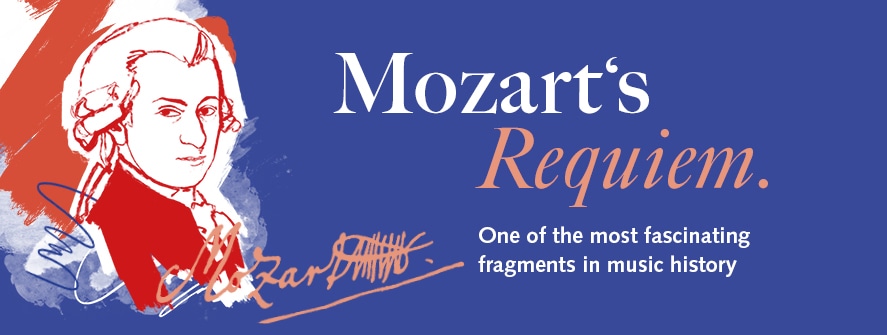
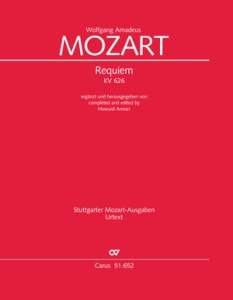
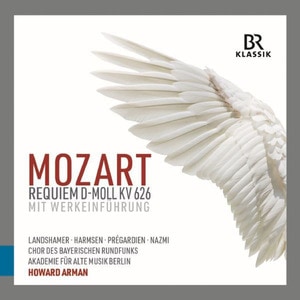

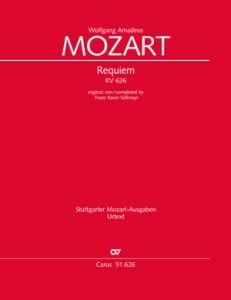

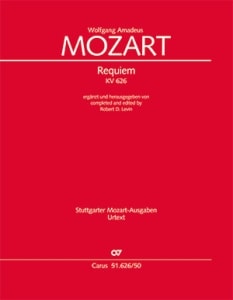




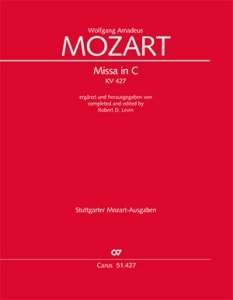



Leave a Reply
Want to join the discussion?Feel free to contribute!